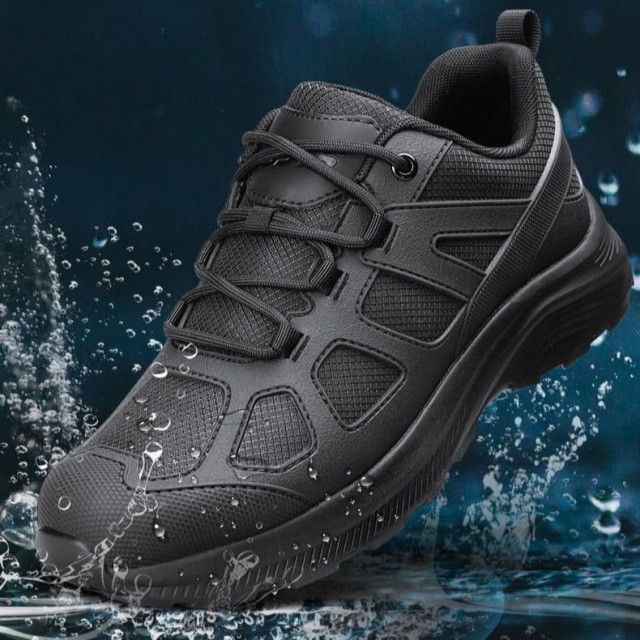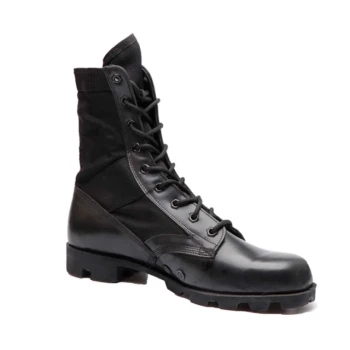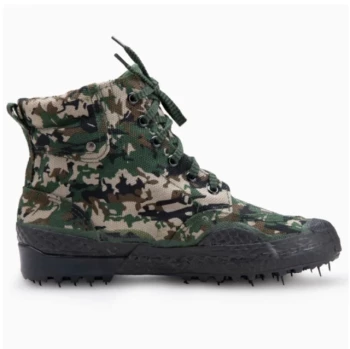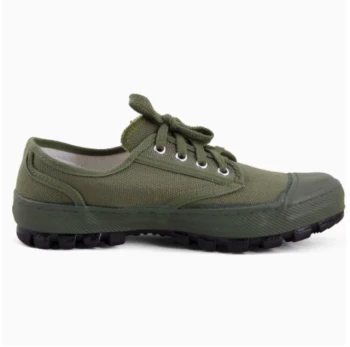Selecting the right boots isn't just about comfort—it's about matching technical performance to your environment. Whether you're braving mountain trails or navigating urban rainstorms, understanding waterproof vs. water-resistant technologies ensures dry feet and long-term value. Here’s how to make an informed choice.
Understanding Waterproof vs. Water-Resistant Technologies
How Boot Construction Defines Water Protection
Waterproof boots use sealed seams and impermeable membranes (e.g., Gore-Tex) to block moisture entirely, while water-resistant options rely on tightly woven fabrics or coatings that repel light rain. Research shows that waterproof designs excel in sustained wet conditions, whereas water-resistant boots prioritize breathability for drier climates.
Key differences:
- Materials: Waterproof boots often combine leather with synthetic membranes; water-resistant versions may use treated nylon or polyester.
- Seam construction: Triple-stitched seams with sealant prevent leakage in waterproof designs.
Decoding Industry Standards and Testing Methods
Look for hydrostatic head test ratings (measured in millimeters):
- 1,000–5,000mm: Suitable for light rain (water-resistant).
- 10,000mm+: Fully waterproof for prolonged exposure.
Industry standards like ASTM D3393 define "waterproof" claims, ensuring reliable performance.
Matching Boot Performance to Your Environment
Scenario-Based Selection: Urban Commuting vs. Mountain Trekking
- Urban use: Water-resistant boots with breathability reduce sweat buildup during short walks.
- Outdoor adventures: Waterproofing is critical for stream crossings or snow.
Occupational Needs: Durability for Construction Sites vs. Lightweight Design for Hiking
- Construction: Waterproof PVC or rubber boots resist mud and chemicals.
- Hiking: Lightweight waterproof leather with Gore-Tex balances protection and agility.
Long-Term Value and Maintenance
Cost-Benefit Analysis: When to Invest in Waterproofing
Waterproof boots cost roughly 20–30% more but last longer in harsh conditions. For occasional use, water-resistant options may suffice.
Care Practices to Extend Boot Lifespan
- Clean mud promptly to preserve coatings.
- Reapply DWR (Durable Water Repellent) treatments annually.
- Store in cool, dry places to prevent material degradation.
Ready to equip your inventory with high-performance footwear? Partner with 3515—trusted by distributors and brands for boots that merge innovation with durability. [Contact us] to discuss bulk solutions tailored to your clients’ needs.
Related Products
- Durable Mid-Cut Tactical Boots for Wholesale & Private Label
- Wholesale Durable Mid-Cut Tactical Boots for Custom & Private Label Brands
- Factory-Direct Wholesale Canvas Boots with High-Traction Rubber Soles
- Wholesale Waterproof Tactical Boots Custom Suede & High-Traction Soles
- Wholesale High-Traction Camo Boots - Custom Manufacturer for Brands
Related Articles
- How to Choose Tactical Boots That Match Your Law Enforcement Needs
- How Tactical Boots Deliver Long-Term Value: A Cost & Performance Breakdown
- How Tactical Boots Achieve All-Day Comfort: Science-Backed Design Secrets
- How Tactical Boots Solve Everyday Challenges: From City Streets to Job Sites
- How Tactical Boot Engineering Solves Real Outdoor Challenges



















